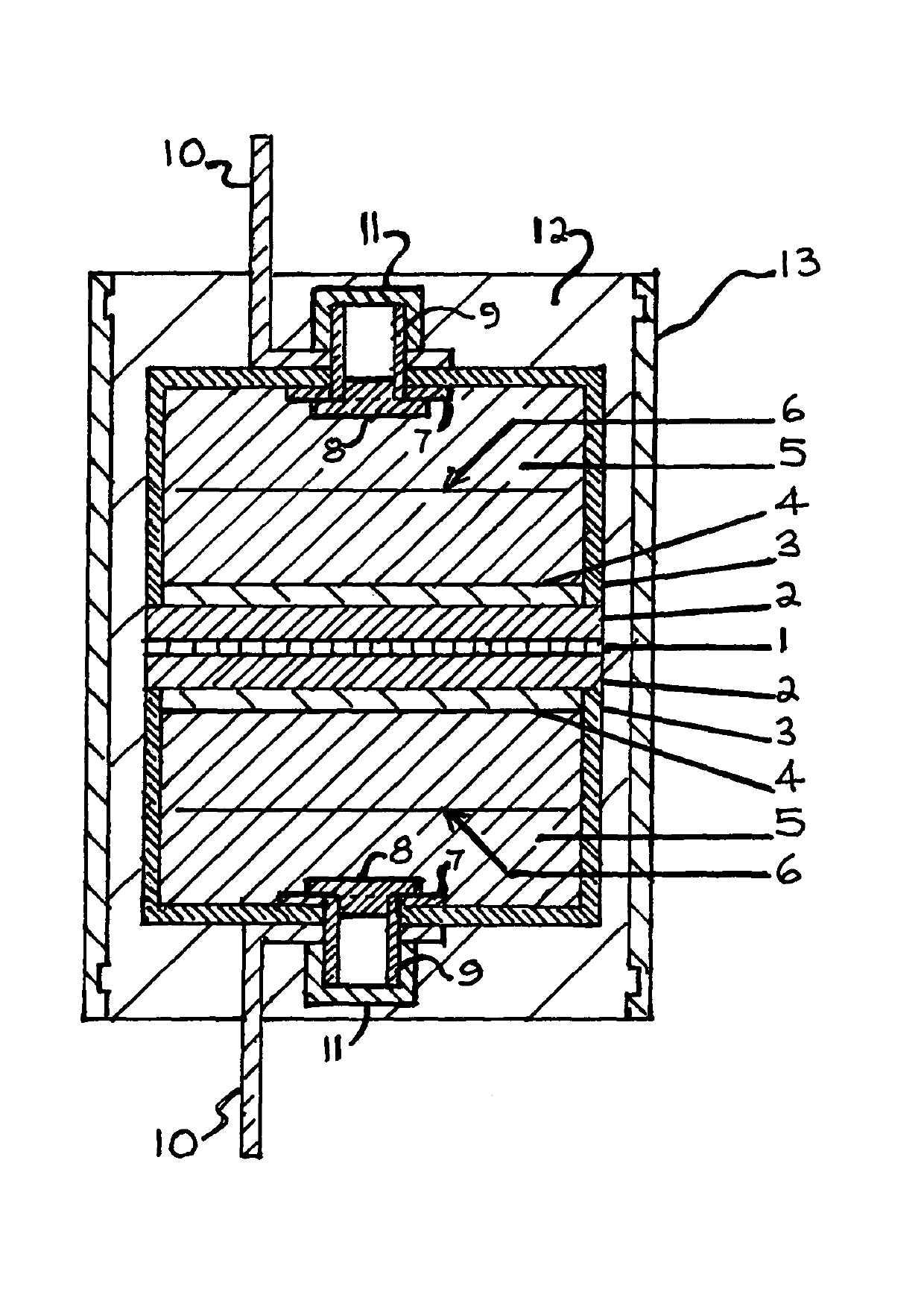Maximal modifiable modular capacitor generator (CAPGEN)
- Summary
- Abstract
- Description
- Claims
- Application Information
AI Technical Summary
Benefits of technology
Problems solved by technology
Method used
Image
Examples
example 1
[0122]One of the fundamental and exemplary base capacitors architecture as described in the first embodiment above and further described herein has the following attributes: contains an inner capacitor (A) with a perforated ceramic separator 1 sandwiched between two inner perforated metal electrodes 2 that are bonded between two perforated metal-filtered canister carbon electrodes 3 as described therein in (A) and (B). Each canister 3 electrode contains 500 g of activated carbon powder 5 with 2500 m2 / g surface area, the interior canister carbon electrodes 3 are reticulated with metal grids 6 (the same material as canister 3) and compacted at 1 cm intervals from 0-20 Kg / cm2. Thereafter, the capacitor interior air is rarefied (electrolyzed) to approximately 10 TORR to obtain maximal internal electrical conductivity and minimal internal electrical resistance at high voltage. The total capacitor weight is approximately 3 kg or 7.6 lbs. The capacitor described herein is charged arbitrari...
PUM
| Property | Measurement | Unit |
|---|---|---|
| temperatures | aaaaa | aaaaa |
| voltage | aaaaa | aaaaa |
| current density | aaaaa | aaaaa |
Abstract
Description
Claims
Application Information
 Login to View More
Login to View More - R&D
- Intellectual Property
- Life Sciences
- Materials
- Tech Scout
- Unparalleled Data Quality
- Higher Quality Content
- 60% Fewer Hallucinations
Browse by: Latest US Patents, China's latest patents, Technical Efficacy Thesaurus, Application Domain, Technology Topic, Popular Technical Reports.
© 2025 PatSnap. All rights reserved.Legal|Privacy policy|Modern Slavery Act Transparency Statement|Sitemap|About US| Contact US: help@patsnap.com

